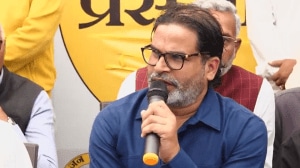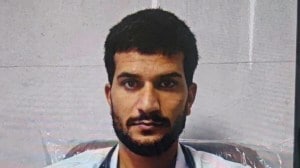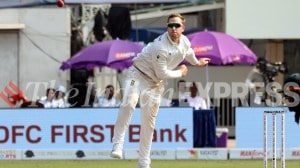Back to the community
Last time we had set the problem of education, health, drinking water and access in India's villages. Since the silly season is soon expecte...

Last time we had set the problem of education, health, drinking water and access in India’s villages. Since the silly season is soon expected in which as it gets cold in the North there is large scale migration of experts to warmer climes, we had argued that international interest in rural India was highly desirable and yet improved understanding would help and had shown that the human development report was moving in that direction. The real issues, however, lie at home.
It was the late Raj Krishna who introduced the programme content of a compulsory, largely centrally funded, minimum needs programme for rural India. By the early nineties a retention rate of 60 percent or more in primary school enrollment had been reached in Goa, Gujarat, Haryana, Himachal, J&K, Karnataka, Kerala, Maharashtra, Punjab and Tamil Nadu. There had been improvements in Andhra, Orissa, UP, and Bengal. The literacy situation followed a similar pattern. In Andhra, Gujarat, Himachal, Karnataka, Kerala, Maharashtra, Punjab, TamilNadu and Bengal, the population growth rate would be less than the national rate of 1.9 percent annual. About 85 percent of the population had been covered by rural drinking water projects and difficult problems still remained in states like MP, Orissa, Rajasthan and UP. About half of India’s villages were connected with roads and around 12 percent of the rural population was not housed.
Progress made in the nineties couldn’t be scoffed at and yet a more focussed programme content was needed. In 1996 B.N. Yugandhar, who had an abiding interest in rural progress, put together some of his cronies and placed all the information together. He also underlined the real problems. The girl child was being neglected, particularly in tribal and other backward areas, both in education and health programmes. Drinking water and roads were particularly a problem in the hills and in dry areas. Problems of pollution were catching up in some areas. Maintenance and supplies were generally bad. The housing and roadsprogrammes were out of date and so on. Liberalisation and the trashing of the state was sapping resources and will.
But there were rays of hope. New technologies were there to solve problems. New institutions close to the people were also emerging. And for every problem, someone had found a solution. The humble farmer lapped it all up. He loved Hasan and Hardhanhalli, but also villages everywhere. A chief ministers conference was called. To the best of my knowledge the first one for two whole days. They let their hair down and complained and complained, but, irrespective of region or party, wanted the problem solved by the end of the century. More important, they were willing to contribute their mite. They took many decisions out of which five were important. The Basic Common Minimum Services Programme would be achieved in a specified time frame – 2001. Second, each state would decide its own phasing of priorities and the Centre would not force each annual target. The Centre would increase the resources tothis programme by 15 percent in real terms each year. Fourth, the states would also contribute a share. Finally, the programmes would be jointly monitored and reviewed.
A committee of chief ministers was set up under my chairmanship to operationalise the whole concept in 30 days. Two senior civil servants put together all the existing schemes for these programmes and those were transferred to the states. The Centre decided to transfer Rs 2,200 crore as its extra 15 percent. The states agreed to contribute 30 percent of the additional resources given to them and the very poor ones could contribute this in kind or labour contributions. They would set their own targets for each programme and more important devolve resources to the district and block panchayats. The freedom given to the states would be therefore shared with each village. It was a good design. The details were to be worked out in the Ninth Plan. which would be finalised by August ’97. The additional money was given in 1996 and 1997. Apart from afew exceptions nothing much happened.
States like Kerala Andhra and MP went about the job seriously and set up a participation machinery. In March 1997, somewhat impatient with the setup, I myself insisted on a review. I was soon shifted out of planning. The details were to the best of any knowledge not worked out. Dr Jalan left for the RBI without finalising the Ninth Plan. This year’s budget makes the tantalising proposition that the programme has been shifted to the states, whatever that means. The earlier practice of placing the annual plan in parliament in the early part of the year was given up. In fact, the member secretary of the Planning Commission is bravely, with all his experience and competence, almost singlehandedly, holding the fort. The annual performance budgets of the ministries don’t talk of these mundane things. The priorities have also shifted elsewhere to culture to our glorious history and to my friendly NGO. One can only hope that the Planning Commission’s exercise on gap-fillingwill soon see the light of day and we will get real again.
It is only if resources and responsibilities are shifted to the community level that we will find out the best ways of using that sincere rupee, getting the teacher back in the school and the medicine in the hospital. It is only then that the Mark II hand pump will be repaired and we will learn the delicate art of unleashing community initiative with a natural sense of direction.





- 01
- 02
- 03
- 04
- 05


























